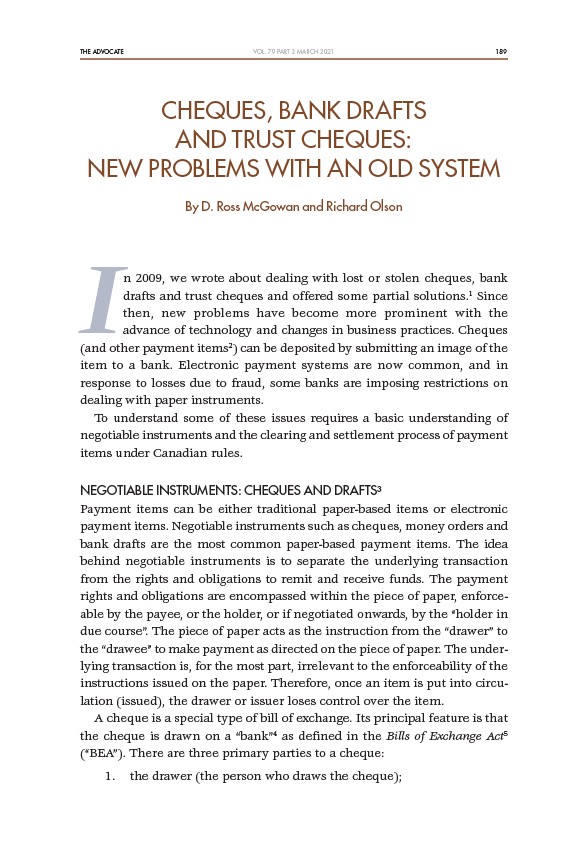
THE ADVOCATE 189
VOL. 79 PART 2 MARCH 2021
CHEQUES, BANK DRAFTS
AND TRUST CHEQUES:
NEW PROBLEMS WITH AN OLD SYSTEM
By D. Ross McGowan and Richard Olson
In 2009, we wrote about dealing with lost or stolen cheques, bank
drafts and trust cheques and offered some partial solutions.1 Since
then, new problems have become more prominent with the
advance of technology and changes in business practices. Cheques
(and other payment items2) can be deposited by submitting an image of the
item to a bank. Electronic payment systems are now common, and in
response to losses due to fraud, some banks are imposing restrictions on
dealing with paper instruments.
To understand some of these issues requires a basic understanding of
negotiable instruments and the clearing and settlement process of payment
items under Canadian rules.
NEGOTIABLE INSTRUMENTS: CHEQUES AND DRAFTS3
Payment items can be either traditional paper-based items or electronic
payment items. Negotiable instruments such as cheques, money orders and
bank drafts are the most common paper-based payment items. The idea
behind negotiable instruments is to separate the underlying transaction
from the rights and obligations to remit and receive funds. The payment
rights and obligations are encompassed within the piece of paper, enforceable
by the payee, or the holder, or if negotiated onwards, by the “holder in
due course”. The piece of paper acts as the instruction from the “drawer” to
the “drawee” to make payment as directed on the piece of paper. The underlying
transaction is, for the most part, irrelevant to the enforceability of the
instructions issued on the paper. Therefore, once an item is put into circulation
(issued), the drawer or issuer loses control over the item.
A cheque is a special type of bill of exchange. Its principal feature is that
the cheque is drawn on a “bank”4 as defined in the Bills of Exchange Act5
(“BEA”). There are three primary parties to a cheque:
1. the drawer (the person who draws the cheque);